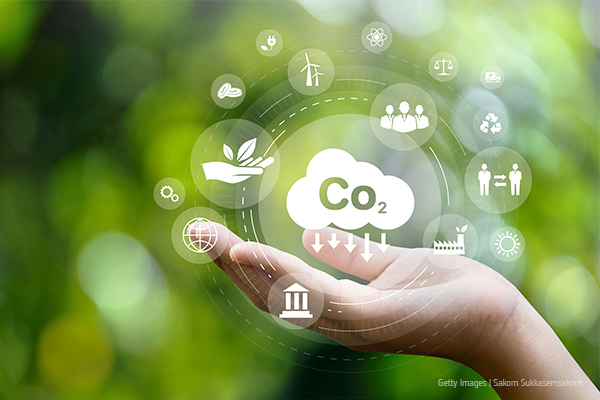
Slight upturn in 2022 ETS emissions due to energy crisis and rebound in aviation– but declining trend maintained
Even against the backdrop of Russia’s invasion of Ukraine, and the ensuing gas price spikes, greenhouse gas emissions covered by the EU’s Emission Trading System (ETS) only rose very slightly last year.
The latest data reported by EU Member States as of 20 April 2023 show a +0.5% increase in 2022 compared to the previous year. Even so, emissions are still on the decline. In 2022, emissions were around 15% lower than in 2019, and remain well below the overall cap for 2022 under the system.
Stationary installations
Despite the EU’s continuing economic recovery in 2022, with GDP growing by 3.5 percentage points, emissions from stationary installations (such as factories, power plants or refineries) under the ETS decreased by 1.1% compared to 2021. This is because the energy crisis had two consequences, exerting two opposing impacts on greenhouse gas emissions: restricted gas supply and higher prices caused an increase in the use of coal for power generation on the one hand, but triggered an overall reduction in industrial demand on the other.
Electricity generation – more emissions from temporary return of coal
In 2022, emissions from electricity production have increased by around 2% compared to 2021, despite decreased demand for electricity in response to high prices and mild weather. The increase in emissions occurred due to increased use of coal for electricity production, triggered by high gas prices and the droughts in multiple parts of the EU, reducing the output of nuclear and hydro power.
Industry – a net decline in emissions
Manufacturing industry saw a reduction of emissions by around 5% compared to 2021. With higher energy prices leading to reduced output, sectors such as fertilisers, metals and cement reported significant emissions reductions in 2022. However, emissions in the oil and gas-producing sectors rose, as refineries sought to profit from increased fossil fuel prices.
Aviation – rebound in emissions as air traffic takes off
Aviation emissions increased significantly compared to 2021. Preliminary data shows an increase of over 70% as the industry recovered from the collapse during the COVID 19 pandemic. However, the overall emission level is still below pre-COVID levels, about 15% below 2019 emissions. This corresponds to current projections which predict a full recovery in air traffic by 2024.
The impact of higher gas prices
According to the International Energy Agency (IEA), around 50 GW of wind and solar was installed in the European Union in 2022, a record high. These additions avoided the need for around 11 bcm of natural gas in the power sector – the single largest structural driver of reduced natural gas demand.
In addition, the increased price of natural gas during the energy crisis resulted in a reduced gas consumption of 55 bcm, a 13% drop year-on-year according to the IEA. The large reduction came from industry (-26%), which partly curtailed its production (-13bcm) or switched to a different fuel (-7bcm). By contrast, EU gas-fired power generation increased slightly, by 1-2%. Gas consumption in buildings dropped by 20% due to milder weather, changes in consumer behaviour, fuel switching, increased efficiency and heat pumps.
Next steps
The European Parliament and Council have agreed to revise the ETS Directive including to tightening of the cap, meaning emissions covered by the ETS will be cut more quickly from 2024 onwards. This is expected to trigger ambitious action by operators to meet the new 2030 target of decreasing emissions by 62% compared to 2005 – and to make progress on the path to achieving climate neutrality in the EU by 2050.
